In The House, with David Neice
Mastersound Dueundici – An Affordable Italian Class A Amp
Verdict: The Mastersound Dueundici is an entry level integrated tube amp that provides a ‘taste of tubes’ in an affordable package. However, this amp is just so very musical as to be able to delight any dedicated listener.
Although I did some tube swapping (see details below), my verdict is based on the factory stock configuration and reflects the best sound available from the unit during the review period. The amp comes equipped with Electro-Harmonix EL34 and JJ ECC802 (12AU7) tubes. For some basic comparisons, I also used a Unison Research ‘Simply Italy’ amplifier as a second point of reference, since that amp is in my personal collection.
The Mastersound provides both high resolution as well as delicacy in presentation. The factory stock Dueundici conveys midrange presence superbly. Additionally, the quality of the Mastersound’s bass is both extended and detailed. This integrated amp also includes a MM phono stage, which works fine, though it won’t likely replace a good outboard phono stage.
Overall, the Mastersound Dueundici is a “full-featured minimalist” amp, and a sonic winner. It offers good value by objective criteria – great musical performance, pleasing looks and build quality, and fair (if not low) pricing.
Introduction
Don’t we all just love tube amps? Nothing warms the cockles of the heart of a devoted audiophile like the warm glow of glass bottles on a cold Canadian winter night. So, while locked down this past spring during the period of Coronavirus self-isolation, I decided to review a tube amplifier.
Reviewing amplifiers is always hazardous as there are so many variables to try to control and the outcomes are often decidedly uncertain. I fondly remember a much celebrated ‘Hi Fi News and Record Review’ comparison of several amplifiers. It was an attempt at a blind review using a panel of some of the finest ears in the audio business in the UK, and it went on for days. The amps were a mix of solid state and tube, and high hopes were held by all as to the final results. In the end, all the amps except one were scored as ‘not significantly different’, and the one that stood out, a Futterman, was an unusual direct-coupled tube amp.
Yet perceptions of differences due to amplifiers rage on. Alan Shaw, the golden eared CEO of Harbeth, has written publicly on the Harbeth blog site that in his view there are no discernable differences amongst well-designed amplifiers. Either an amp is properly designed or it is not: finito. This presents a certain problem for reviewers (and reviews) of amplifiers. As some provisional comfort to the reader, all I can offer is that over 50 years of careful listening, while my opinions are still solely mine, I do discern differences.
Affordability
Tube amps today are becoming ever more expensive. We identified this amp as an excellent candidate for a first experience of tubes by the curious audiophile. Granted, the Mastersound is a $3900 item, certainly not chump change, but when compared to many amps today pushing into the five-figure range, it may be considered very good value, especially being hand built in Europe. This may be your first tube amp, but Mastersound builds it well enough that it could well be your last one.
This is not a run of the mill push-pull tube amp from China. It is, in fact, a single-ended Class A design without negative feedback – which in many quarters is considered the cream of the tube crop. It is true that you’ll need to have efficient speakers, rated at say 87 db or higher, but for many of us, the benefits of such amps are worth the fuss.
Typically, the more expensive single-ended designs focus on exotic but very low-powered triode output tubes such as the 2A3 or the 300B. The approach taken here by Mastersound is to use the EL34, a much less expensive pentode tube, but capable of somewhat higher power output than the ancient triodes. I’ll say that of all the tube types, the EL34 is one of my favourites and it has a well-deserved reputation for a certain magic in the midrange, where I tend to dwell sonically.
The Italian Invasion
What is it about the Italians these days? We’ve got Diapason, Gold Note, Unison Research, Sonus Faber, Aqua Acoustic (with their specialty DACs), Mastersound, and a host of others – and all these firms are swinging for the fence and doing pretty well at it. One of the big things they bring to the table is an appreciation for the aesthetics of the hobby. Who can resist looking at Sonus Faber’s higher end speakers? The cabinetry is superlative.
Which brings me to the modern design look of this amp. It has a pair of fetching wood panels attached to either side of the metal chassis. The look is decidedly very modern and very Italian. You will either like it or you won’t. Since I really like Italian styling cues I am quite partial to the aesthetics; Bellissimo!
Why use a low-powered amplifier?
The Dueundici is still pretty small potatoes when it comes to output power. It’s rated at 11 watts per channel, so you’ll have to be a believer that the quality of the first watt of sound is the most critical aurally. I am a firm believer in that viewpoint. Certainly, the amp will require more efficient speakers and anything that has a reputation for being difficult to drive will be off limits. Magnepan owners should probably look elsewhere. My main speakers are the 88dB, 4 Ohm, JM Reynaud Bliss Jubile.
But there are many pluses to lower powered tube amplifiers. First of all, they’re a bit ‘greener’ with energy consumption, as they run wide open at around 85 watts of draw. That’s lower than a big push-pull amp, and not bad for Class A. Secondly, the 11 watts of output is actually in many cases lots of power. Even an 87db efficient speaker system will produce a stonking amount of sound in a domestic environment with one watt of input. After all, 87db (measured at one meter), will project as ‘pretty loud’ in many rooms.
Small tube amps also have a much simpler topology than the big push-pull parallel output tube amps. Typically there is only one power tube per side, and a pair of driver tubes, so they are easy to maintain/fix, and a bit less expensive overall. Then there is the weight factor. Large, high output tube amps are very heavy, ranging from 50 to 150 lbs., but these simpler four tube designs induce no lasting hernias (Umm. Watch out for Mastersound’s Compact 300B and 845 amps! -Ed.). Last, but far from least, they emit a glorious sound, which is, after all, the holy grail of every audiophile.
A bit of history
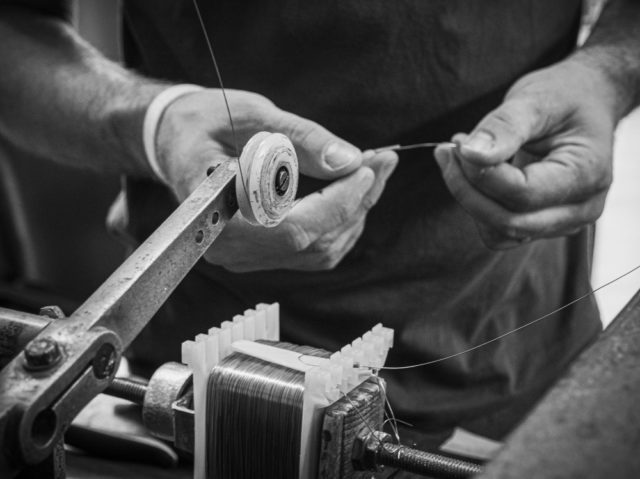
After 50 years of installing sound reinforcement systems in various countries, Cesere Sanavio returned to Italy to found with his sons the company Mastersound. Their first amplifier for commercial release was the 2-11A in 1994. The Dueundici (translation “two eleven”) is a direct descendent of this original amplifier. Sanavio’s personal passion was the hand winding of amplifier transformers, and this is reflected in the extraordinary attention to detail afforded to the output transformers in the entire Mastersound line of amplifiers, which, as you will notice from their website, is quite extensive. Despite the round transformer covers, Mastersound output transformers are all hand wound, EI-core types, encased in a special resin compound. That’s where the magic lies.
Design Features
The Mastersound Dueundici is an integrated two channel single-ended Class A tube amplifier, with three line level inputs and an onboard low-gain or “moving magnet” (MM) phono stage. The amplifier is designed to use no negative feedback, a design characteristic that carries over to all the amps made by Mastersound. The Dueundici has both 4 and 8 ohm taps, thus offering greater flexibility in regards to speaker matching. The unit is quite heavy at 15 kilograms and the iron in the transformers is definitely noticeable when you are required to lift it or move it about.
From the factory the amp is equipped with a pair of Electro-Harmonix EL34 power tubes, and a pair of JJ ECC802 (12AU7) tubes for the driver stage. There is no grill cage per se, but the tubes are protected by two sheets of aluminum that are stacked on pillars and that surround the tubes (see photos). Provided the unit is not tampered with, the warranty is for five years, all parts and labour included, with the proviso that the owner must transport the amplifier to the company or its distributor at the owner’s cost.
The build quality of the Dueundici is superb. The aesthetics are, of course, strikingly Italian. It is a compact unit and arrestingly good looking, with the sheets of metal for the tube cage adding an extra level of panache.
Remote Control
The Mastersound remote is the simplest of affairs, having only two buttons, one to boost volume and the other to cut. However, it is housed in a beautifully finished wooden case that matches the amplifier’s wood trim, and is very appealing to hold. Incidentally, the volume steps are in very small increments – well done.
Initial impressions
Right off the bat the Mastersound offers a distinctive sound field. The common characteristic of EL34 amps is that they can offer the listener enhanced midrange presence. This presence (sometimes called ‘bloom’) is always so musical that it can be very seductive, and in some instances has been called ‘wrong’ by critics who prefer a different sound field.
I am a prisoner of midrange presence, so I have no complaints, even if it is found here in abundance. Using intimate female vocals as a standard, such as found on the CD’s of Eva Cassidy, I have to say that with the Mastersound amp you can climb right into her voice and curl up.
There is pronounced extension in the bass energy too. The Dueundici goes deep and there is good precision and delineation in both the bass range and the bass notes. I ascribe this to the specially wound transformers which Mastersound identifies as a central feature that distinguishes its amplifiers from other manufacturers.
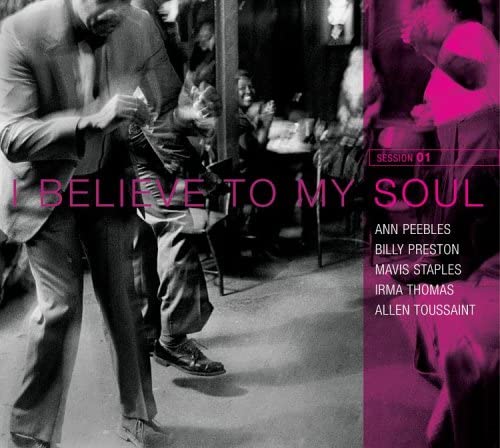 For instance, a favourite CD in my collection is the compilation I Believe to My Soul, a collection of tracks featuring solos by Mavis Staples, Ann Peebles, Irma Thomas, Allen Toussaint, and Billy Preston. It’s an impressive lineup of high-powered talent. The bass energy on many of the tracks drives the collected rhythm and blues tunes along with extra force. I have heard this CD countless times, but the quality of the bass using the Mastersound Dueundici was really something special to hear.
For instance, a favourite CD in my collection is the compilation I Believe to My Soul, a collection of tracks featuring solos by Mavis Staples, Ann Peebles, Irma Thomas, Allen Toussaint, and Billy Preston. It’s an impressive lineup of high-powered talent. The bass energy on many of the tracks drives the collected rhythm and blues tunes along with extra force. I have heard this CD countless times, but the quality of the bass using the Mastersound Dueundici was really something special to hear.
While reviewing the amp, I found that this extended and detailed bass range was the strongest audible difference that characterized its presentation to the listener. Just to be certain, I had my opinion about the enhanced bass range of the Mastersound checked by another critical listener and my viewpoint was amply confirmed.
Power Cable Discussion
Initially I used a generic power cable to supply AC voltage to the Mastersound. I found the amp to be a bit closed in initially and wondered if it needed warming up. I inserted a larger and more robust power cable and settled down for some serious listening. The upgraded cable uses high grade copper contacts for the connections – it’s hand made by ‘Burtman’ on Canuck Audio Mart and is available at a reasonable cost, readers might want to check it out. Perhaps these cables will be reviewed in future by Wall Of Sound.
Indeed, the detailed manual for the Dueundici notes that a good twenty minutes or more are needed to warm up the tubes and the transformers and I found that each time I would power it up, this was definitely the case. My Unison Research amp, in contrast, hardly needs any warm up time at all, and I cannot really distinguish between when it has been just turned on from later use. It just doesn’t seem to matter.
Digging Deeper
I’m an inveterate tinkerer, so tube swapping comes to me like second nature. The factory stock Mastersound Dueundici is a very good sounding amp, but I kept wondering if the ‘delicacy’ I was hearing could be spiced up with some more robust oomph. Rather than search out replacement tubes, I simply followed the advice offered in Tim Smith’s comparative review of EL34 power tubes written a few years ago for Wall Of Sound. Tim suggests that Tung-sol EL34’s are great value all-around replacement tubes. Since I had some of these on hand, I decided to give them a try in the Mastersound to replace the Electro-Harmonix tubes supplied by the factory.
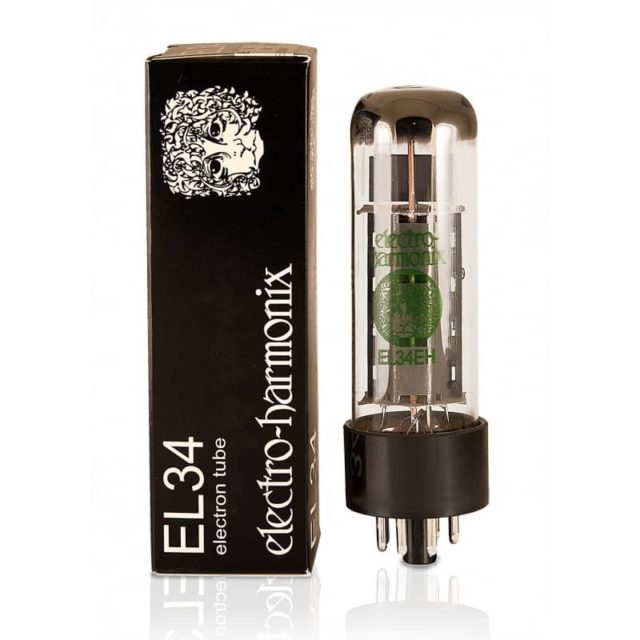 Initially I was fooled. The Tung-sols did indeed sound more robust and at first I thought the gutsier presentation of the Tung-sols in the Dueundici was a superior type of sound. In fact I thought the change had made an “8.5” amp into a “9.0”. But on much further listening and by switching back to the Electro-Harmonix tubes, I came to the conclusion that all the delicacy and nuance of the EH tubes, as factory supplied, were actually providing a superior sound field. These are subtle matters, but not surprising. After all, the designers of amps will have tried various tubes from different manufacturers, and their ears are also highly trained, so it stands to reason that they settle on a tube type that shows off their amplifier at its best performance.
Initially I was fooled. The Tung-sols did indeed sound more robust and at first I thought the gutsier presentation of the Tung-sols in the Dueundici was a superior type of sound. In fact I thought the change had made an “8.5” amp into a “9.0”. But on much further listening and by switching back to the Electro-Harmonix tubes, I came to the conclusion that all the delicacy and nuance of the EH tubes, as factory supplied, were actually providing a superior sound field. These are subtle matters, but not surprising. After all, the designers of amps will have tried various tubes from different manufacturers, and their ears are also highly trained, so it stands to reason that they settle on a tube type that shows off their amplifier at its best performance.
The Dueundici has a phono input, which I tried with a Sumiko Pearl MM for the testing session. The Sumiko is a budget range cartridge, but a good performer at least through other phono stages. I have two external phono stages; a Musical Fidelity and a Graham Slee. These phono stages were tried through the line level inputs of the Mastersound, and they worked well, but by contrast, the on-board phono stage within the Mastersound amp was somewhat disappointing. On paper it should have been a good loading match for the Sumiko, but the performance was just average.
Next I mounted a brand new Hana EL moving-coil cartridge in my Gold Note TT and ran that from my MF phono into the Dueundici’s line level inputs, and the resulting sound was superb. This Hana, combined with my older Musical Fidelity “The Preamp II” phono section (in the moving coil position), proved to be quite outstanding when run into the Mastersound amp with the stock EH tubes on board. Gobs of inner detail and midrange presence almost had me fainting from delight.
 One of my favourite vinyl albums of all time is Van Morrison’s Astral Weeks and I have three copies. Greil Marcus, the rock critic, has said he will be buried with a copy of that album, its impression on him is so strong. When playing this album with the Hana & MF through the Dueundici amp, I was transported to hear the vocals of Van Morrison in his late youth (he was around 23 when it was recorded) and I have never heard it sound better. The tracks Cyprus Avenue and Madame George were stunning to hear. This amp can really convey emotion.
One of my favourite vinyl albums of all time is Van Morrison’s Astral Weeks and I have three copies. Greil Marcus, the rock critic, has said he will be buried with a copy of that album, its impression on him is so strong. When playing this album with the Hana & MF through the Dueundici amp, I was transported to hear the vocals of Van Morrison in his late youth (he was around 23 when it was recorded) and I have never heard it sound better. The tracks Cyprus Avenue and Madame George were stunning to hear. This amp can really convey emotion.
Summing Up
For those whose taste and budget match up, and who seek absolute sound and a take no prisoners attitude when buying an amplifier, the factory stock Mastersound Dueundici deserves your full and alert attention.
The Dueundici offers a sound field comparable with the best in its class, and it is going to be hard to send this one back to the distributor. Once you have heard this level of sound reproduction, the experience is not easy to forget. Some sleepless nights may follow….
Mastersound Dueundici Single Ended Class A tube amplifier; MSRP $3900 (Canadian) “introductory price”
– Integrated tube amplifier – 11 watts per channel – Three line level inputs – MM phono stage – Load impedance 4 and 8 ohms – Zero negative feedback – Frequency range 15 Hz to 35 KHz, minus 0 db – Weight 15 kilograms.
Web: http://www.mastersoundsas.it/
Review Source: the Dueundici amp was supplied for this review courtesy of the Canadian distributor, Hi Fi Art, based in Winnipeg, Manitoba. Tel. (431)777-6840. Thanks to Al Kaglik of Hi Fi Art.

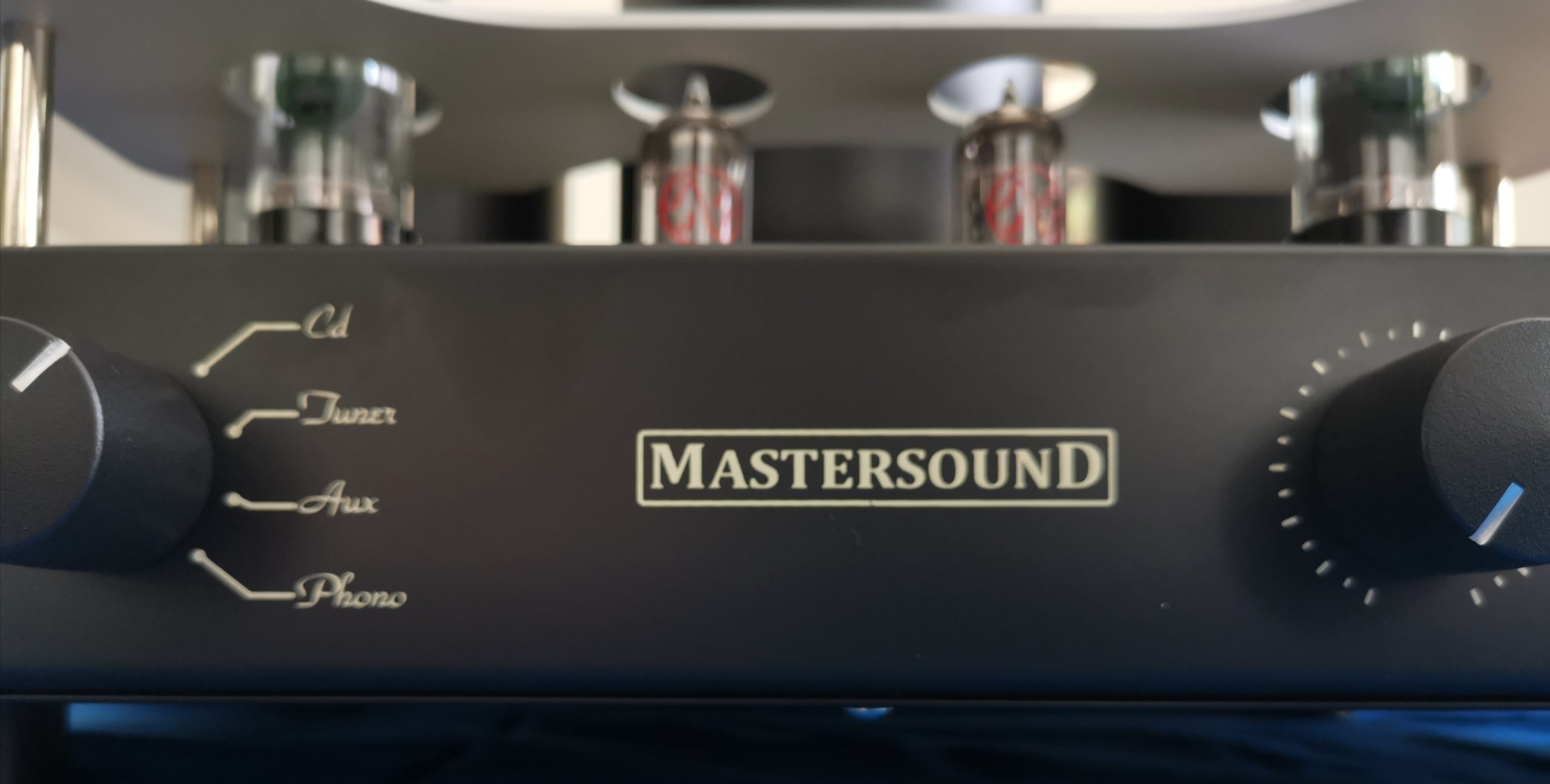
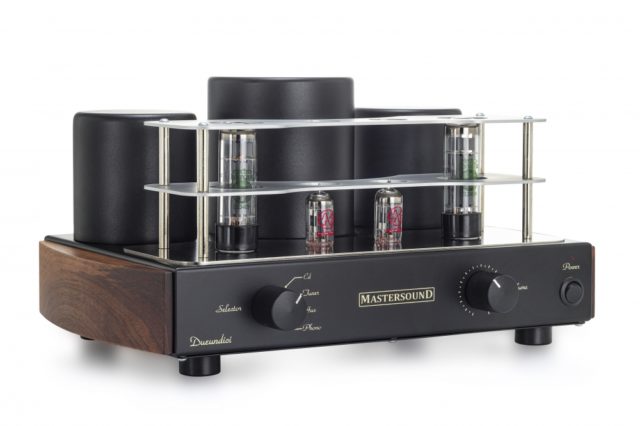
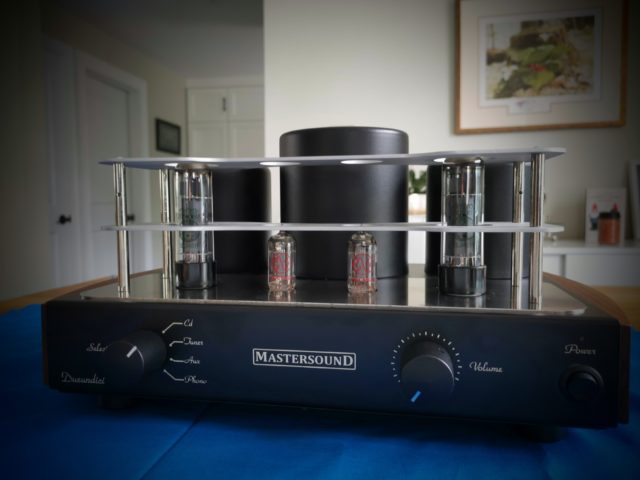
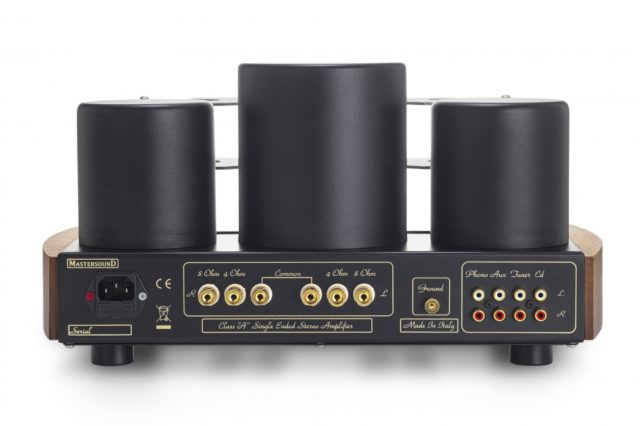

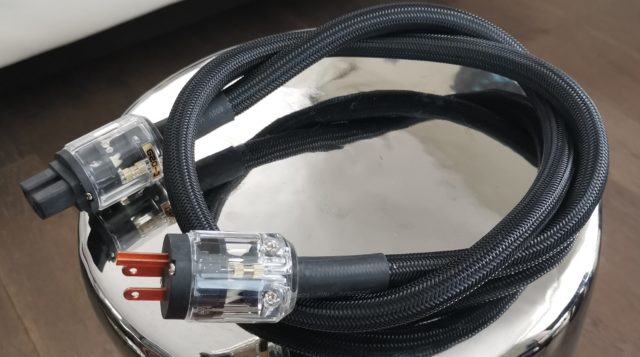
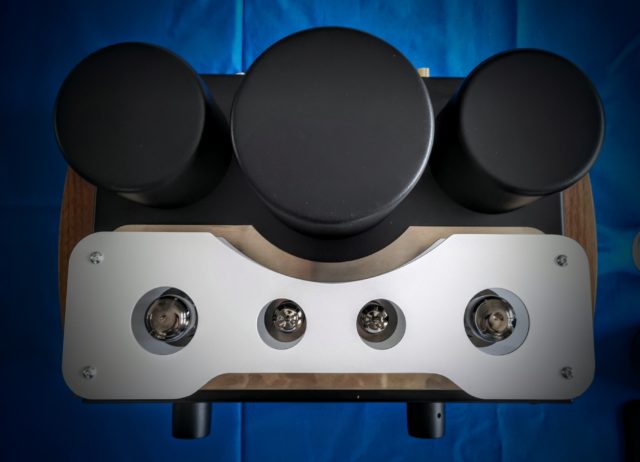
Greetings David,
It would have been interesting if you’d included a bit more detail with regards to the sonic similarities and differences between the Mastersound and your resident Unison Research amp.
My favorite EL34-type tube is the Genalex (Russian reissue) KT77, but I’ve only heard it in a push pull amp. The Gennies are about three times the price of the E-H EL34s, but of course only two are needed in a SE amps like the Mastersound.
Regards, Steve
Hi Steve,
Originally I did more of a comparison review, but the draft article got long and unwieldy. Because aural memory is short and amp comparisons are sketchy at best, we decided not to ‘compare’. However, as a general comment, I was so impressed that I bought a pair of EH EL34s and put them in my Unison Simply Italy (replacing Tung Sols) and I would say using the same tube that they are pretty closely matched although the MastersounD has deeper bass extension. Likely the transformers make the difference.
Cheers,
David Neice
I just received this amp to use while me preamp is being fixed. Then I’m planning on using in another system. I’m wondering if you figured out how to remove the tube cage. Hard to try different tubes with the cage installed.
Thanks,
Adam
(translated)
..I have the opportunity to buy a second-hand Mastersound Dueventy (20 watts per channel), at a good price, but my Proac speakers are 86db and 8 ohms. Would this marriage be a mistake, or can I associate them without problem, despite the fact that my boxes are of moderate sensitivity? I hope that someone clears my doubts, before making the purchase of the Mastersound, which is a magnificent amplifier, killer of other more expensive ones; with its fabulous power supply and components, in general. Thanks. Greetings.
I think it will depend on a few factors. Which model Proac, how far back do you sit, what decibel levels do you normally listen at?
This can work, but it may not be ideal in all cases.
(translated)
..I already said it, but you haven’t given me a clear or definitive answer, that’s why I asked you again!
Hi David,
Which of the two amps is warmer and fuller (mids) sounding? Dueundici or Italy!
Thanks!